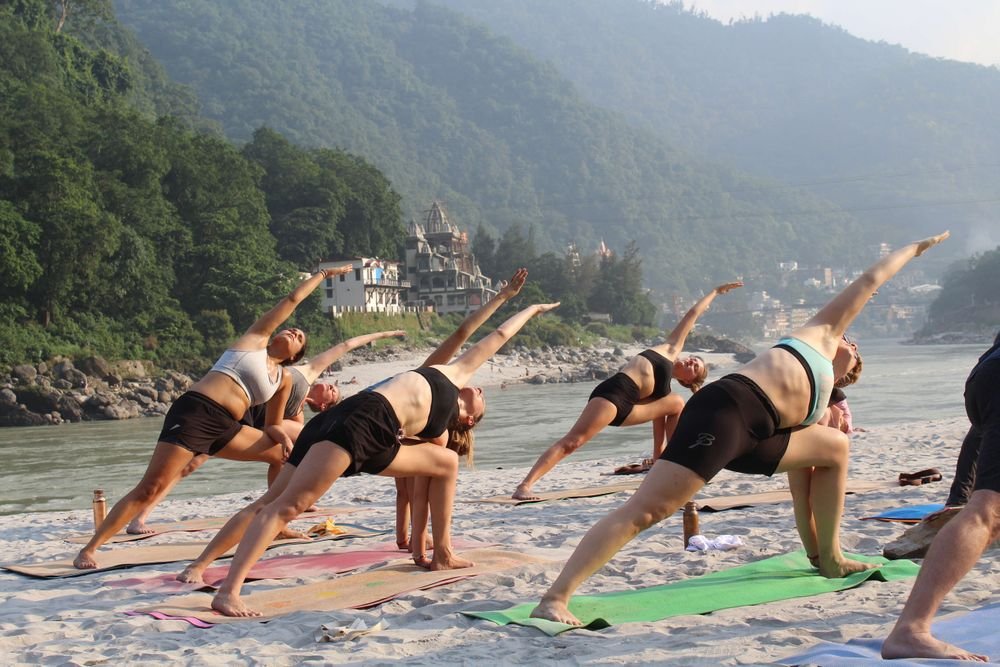Nestled in the foothills of the majestic Himalayas, Rishikesh is more than just a global yoga capital—it is a sanctuary of ancient wisdom, cultural richness, and spiritual vibrancy. For yoga enthusiasts embarking on their teacher training journey here, the experience goes far beyond mastering asanas and pranayama. What truly sets Rishikesh apart is the deep cultural immersion it offers. From sacred rituals to spiritual discourses and a harmonious way of life, the town invites you to embrace yoga not just as a physical discipline, but as a lifestyle deeply rooted in Indian heritage.
The Spiritual Heartbeat of India
Rishikesh has long been revered as a spiritual epicenter. Legends say that sages and saints have meditated here for centuries, drawn by the tranquility of the Ganges and the surrounding mountains. Undertaking your yoga teacher training (YTT) in this divine setting places you directly in the flow of this ancient energy. The town pulsates with devotion—morning chants from ashrams, evening aartis on the ghats, and the aroma of incense in the air all weave a sensory tapestry that grounds your spiritual practice in a living culture.
Ashram Life: Simplicity, Discipline, and Unity
Most yoga teacher training courses in Rishikesh are conducted in traditional ashrams. Living in an ashram is an immersion into a lifestyle of simplicity, mindfulness, and routine. You wake up early, attend meditation or mantra sessions at dawn, eat sattvic vegetarian meals, and follow a schedule that aligns with the yogic principles of balance and self-discipline.
What makes this experience unique is the sense of unity and shared purpose. Students from around the globe gather here, yet the common pursuit of self-realization dissolves differences. This melting pot of cultures, set against the backdrop of India’s timeless traditions, fosters a powerful environment for personal transformation.
Participating in Sacred Rituals
During your Yoga Teacher Training in Rishikesh, you’ll likely be invited to participate in or witness age-old rituals such as the Ganga Aarti—a spectacular ceremony held at sunset where priests offer fire, flowers, and chants to the sacred river Ganga. These rituals, far from being mere performances, are deeply symbolic and are a cornerstone of Hindu devotional practice.
By attending these ceremonies, you gain insight into the Indian spiritual worldview—a world where nature, divinity, and daily life are intimately interconnected. The experience of standing on the banks of the Ganga, holding a diya (oil lamp) as it floats down the river, is a moment of serene reflection and emotional catharsis that stays with many long after they leave.
Learning Beyond the Classroom
While your formal curriculum will cover anatomy, philosophy, asana practice, and teaching methodologies, cultural immersion adds a hidden layer of education. You’ll have the opportunity to attend satsangs (spiritual discourses), interact with local swamis and yogis, and learn stories from the Ramayana or Mahabharata directly from those who have lived them through devotion and study.
Some schools offer field trips to sacred sites such as Neelkanth Mahadev Temple, Vashishta Cave, or Kunjapuri Devi Temple, which are rich in mythological and spiritual significance. These excursions ground your academic learning in lived experience, helping you connect philosophical concepts with their origins and applications in real life.
The Sounds and Sights of Rishikesh
One of the most beautiful aspects of cultural immersion in Rishikesh is simply being present. Walking along the Laxman Jhula or Ram Jhula, you’ll hear the sounds of temple bells mingling with bhajans (devotional songs) and the rhythmic chants of “Om Namah Shivaya.” Street vendors sell rudraksha beads, Ayurvedic herbs, and hand-made malas, while saffron-robed sadhus meditate quietly by the river.
Every day in Rishikesh feels like a lesson in mindfulness. The cows wandering peacefully on the streets, the slow-paced lifestyle, and the general reverence for life all nudge you toward a more conscious, harmonious way of living. For many, this immersion becomes as transformational as the yoga training itself.
Experiencing Indian Cuisine and Ayurveda
Another enriching cultural layer comes through food. Ashrams and training centers serve meals based on the Ayurvedic sattvic diet—wholesome, plant-based meals that are not only nourishing but also energetically uplifting. You learn how food is treated as medicine, and how it affects your mind, body, and spirit.
Some yoga schools also incorporate basic Ayurveda sessions, offering you a glimpse into India’s ancient health system. Understanding your dosha (body constitution), participating in detox rituals, or learning herbal remedies can enhance your yoga practice and teaching in profound ways.
Language and Cultural Exchange
While the training is typically conducted in English, many schools encourage the learning of basic Sanskrit terms, mantras, or even Hindi phrases. This linguistic exchange deepens your connection to the teachings and allows you to engage more fully with the local community. You might find yourself sharing a cup of chai with a shopkeeper, joining a local music night, or celebrating Indian festivals like Diwali or Holi if your training aligns with the dates.
Cultural immersion also happens through your interactions with fellow trainees. As you share stories, traditions, and perspectives, you begin to see the universality of yoga as a bridge between cultures rather than a practice bound by geography.
Lasting Transformation
The most profound outcome of cultural immersion during your yoga teacher training in Rishikesh is the shift in perspective. You begin to see yoga not as something to be practiced on the mat for an hour each day, but as a holistic way of life—one that honors the mind, body, spirit, and the world around you.
This immersion often leaves a lasting impression. Many students return home not only as certified yoga teachers but as ambassadors of mindfulness, simplicity, and unity. They carry with them the essence of Rishikesh—the discipline of the ashram, the serenity of the Ganga, the depth of ancient teachings, and the warmth of Indian culture.
Related Reads
- The Perfect Jhula for Home: A Guide to Choosing the Right One
- Uber Clone: The Future of On-Demand Business Models in 2025
- Practical Ethical Reasoning Techniques From Heads Examined Lessons
- Industrial Expert Perfume Manufacturer – ANANT FRAGRANCES PVT. LTD.
- Top Clinics for Lipoma Removal in London: Expert Advice & Reviews



